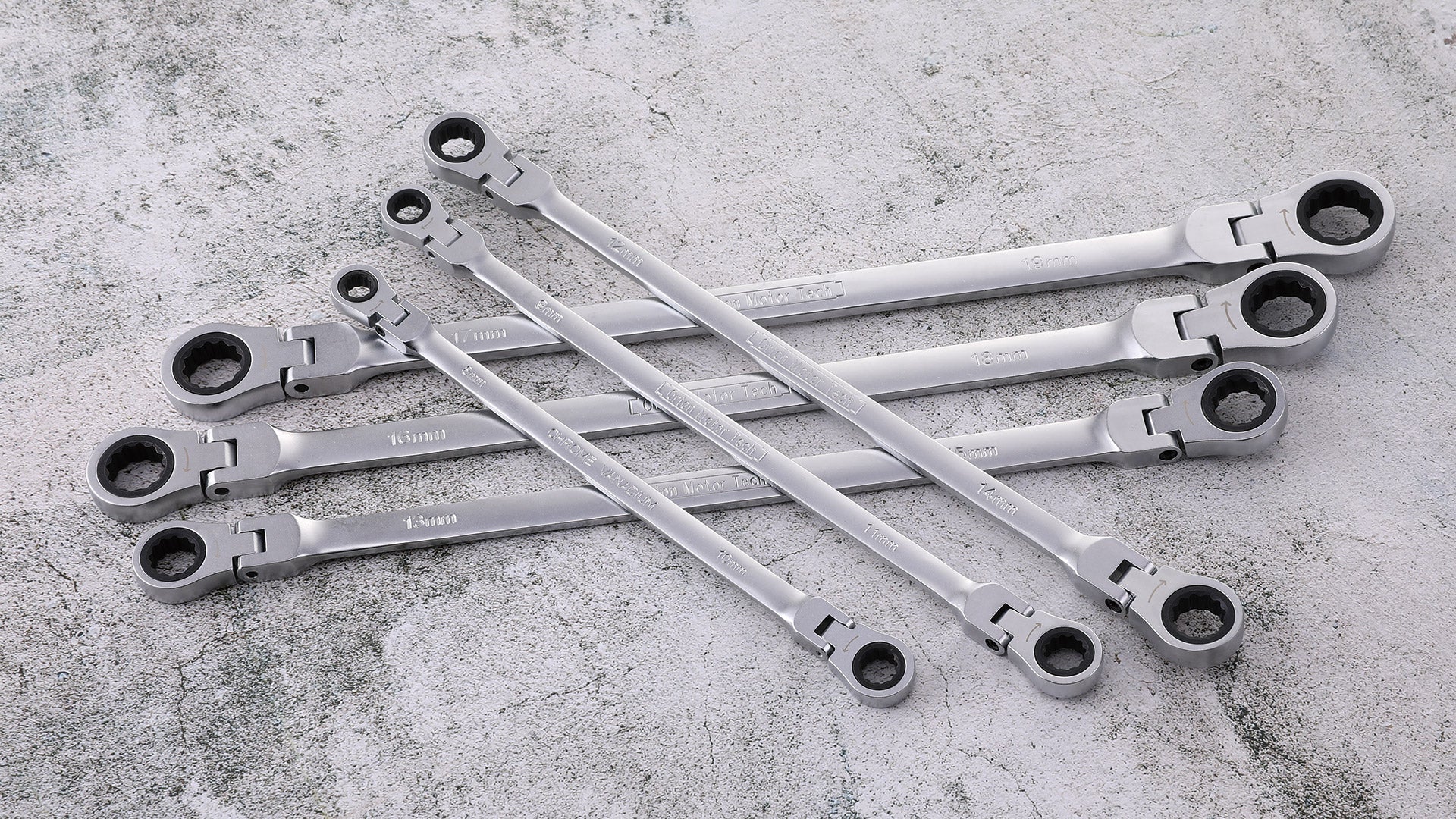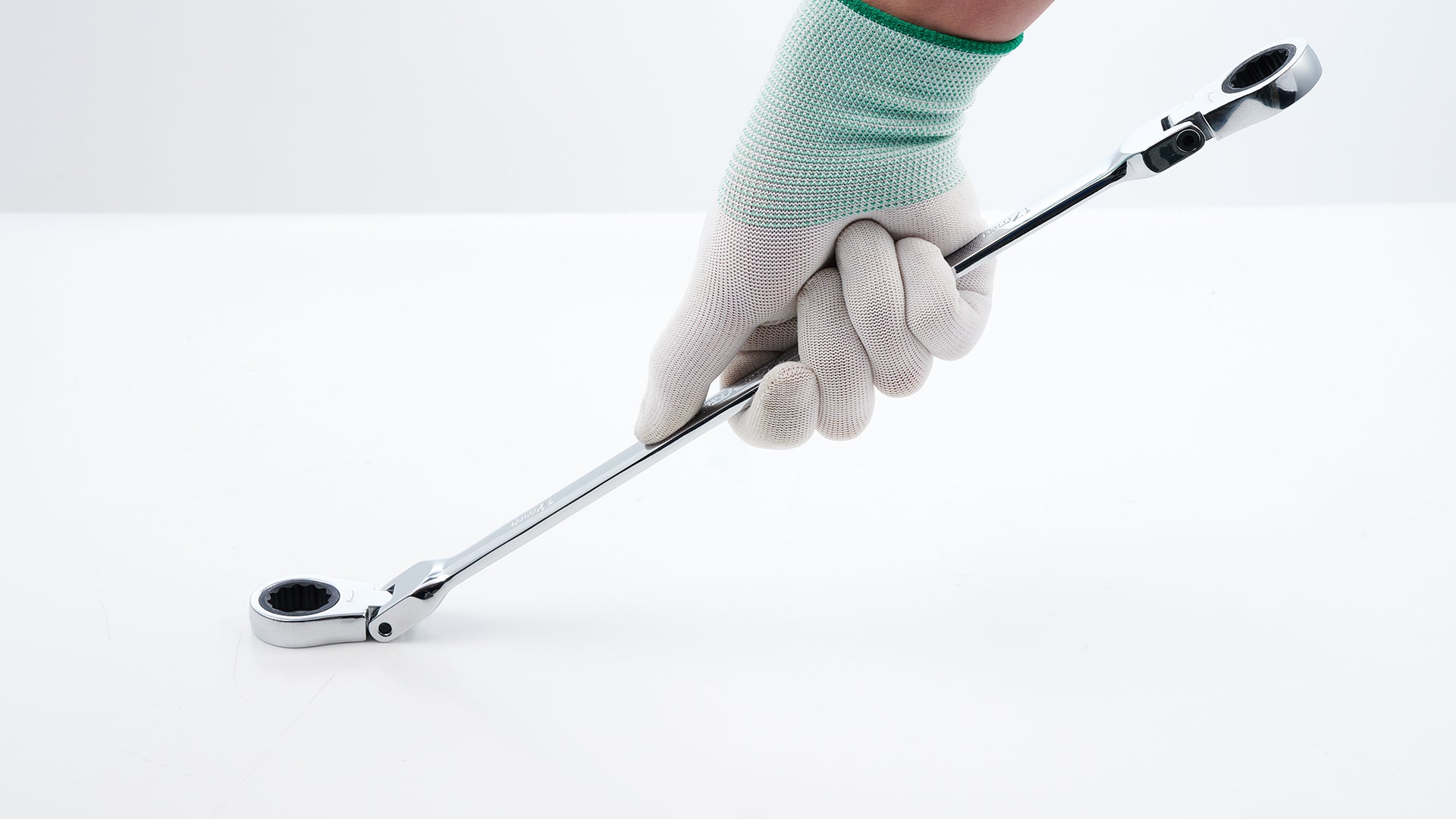During the daily drive of a car, various parts will be gradually damaged under long time use and shock. When you need to do repairs on your car, a necessary tool is a wrench. It is a hand tool used to loosen and tighten nuts or bolts. A normal wrench needs to loosen the fastener after a certain angle of rotation, which is to reposition the wrench. This can be tolerated if only a small number of fasteners are to be handled. But once the number is large, repositioning the wrench will take a lot of time for maintenance. In this case,a ratchet wrench is a better choice.
What is a ratchet wrench?
A ratchet wrench works on almost the same principle as a socket wrench. It has ratchets pawls inside that allow the wrench to turn the bolt in one specific direction and turn in the other direction to reposition the wrench without affecting the tightening of the bolt. Also, it has the relative profile of a combination wrench, which you can use when a socket does not fit.
Ratchet wrenches generally have 72 teeth, but they can also have an unused number, and designs with more teeth require less oscillation to turn the hex head. Because of the ratchet, each ratchet wrench has a specific diameter, rather than one that fits a different size driver. This design has some advantages along with some trade-offs.
Pros
- Ratcheting action avoids disassembly and resetting like a normal combination wrench
- Thinner profile fits where sockets can't
- 6- and 12-point heads available
Cons
- Larger diameter heads can sometimes get in the way of maintenance work
- Slips off fasteners more easily than a socket wrench
- Higher price than regular wrenches
Why you need a ratchet wrench?
Thinner profile than a socket wrench
For a big guy like a car, there is sometimes very little space to work with when it comes to repairs. With a socket wrench you may need 1-1/2 inches or more of space to hold the socket on the bolt. When a socket wrench is as difficult to use as a standard wrench, a ratchet can be used.
Avoid repositioning wrench
Using a regular wrench in tighter places is generally not enough space to allow you to tighten the bolt at a wide angle. You need to turn 1/6 turn (sometimes less) and then pull the wrench down to reposition it before putting it back on the bolt, and repeating the above takes a lot of time. A ratchet wrench will be able to reposition the wrench without moving it.
More flexible head
There are ratchets on the market today that have a flexible head. The flexible head allows you to approach the fastener from different angles, allowing you to work in places that are difficult to reach with ordinary tools.
Note: Because of the ratchets, do not tighten fasteners or loosen bolts violently when using ratchet wrenches. Because the pawl is the most fragile part on the wrench in terms of physical structure, you need to avoid using too much force when using it.
What kind of ratchet wrench should I choose?
Depending on the size of the bolt used for the part you need to repair determines what diameter ratchet wrench you should buy. But usually there are different sizes of bolts on a car, and you may be able to use the wrench outside of car repair, so buying a metric ratchet wrench set is a more cost-effective option.
Sometimes there may be places that are hard to reach with a regular wrench, and you may need a wrench that can rotate the head.
On a budget, we recommend that you purchase a wrench with a longer handle length for more torque and control. For durability, chrome vanadium steel offers superior strength and longevity at the right price, and Orion Motor Tech's ratchet wrench set meets all of these needs with superior quality and features at an affordable price.
FAQs
What is a ratchet wrench?
A ratchet wrench is a hand tool used to tighten or loosen nuts and bolts with a ratcheting mechanism inside that allows the wrench to turn fasteners in one direction while repositioning freely in the opposite direction without removing the wrench.
How does a ratchet wrench differ from a standard wrench?
Unlike a standard wrench that requires repositioning after each turn, a ratchet wrench lets you keep turning in one direction without taking the tool off the fastener, which speeds up work, especially in tight spaces.
Can ratchet wrenches be used in tight spaces?
Yes, ratchet wrenches generally have a thinner profile than socket wrenches and some have flexible or pivoting heads, making it easier to work in confined or hard-to-reach spaces.
Are there any precautions when using a ratchet wrench?
Yes, avoid applying excessive force or violent movements, as the pawl inside is a fragile part. Use hand tools rather than power tools to tighten the ratchet slowly and evenly to prevent damage.
What materials are durable for ratchet wrenches?
Chrome vanadium steel is a popular and durable material offering strength and longevity for high-quality ratchet wrenches.
Should I buy a single ratchet wrench or a set?
If you work with a variety of bolt sizes, purchasing a metric ratchet wrench set from Orion Motor Tech is more cost-effective and versatile, especially for automotive repairs where multiple sizes are common.





